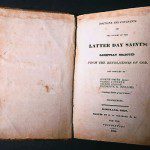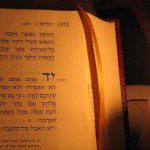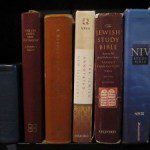A few scattered thoughts on what “the only true and living Church” might and might not mean.
President Hugh B. Brown made the point quite forcefully that we do not have a monopoly on truth.
“We have been blessed with much knowledge by revelation from God which, in some part, the world lacks. But there is an incomprehensibly greater part of truth which we must yet discover. Our revealed truth should leave us stricken with the knowledge of how little we really know. It should never lead to an emotional arrogance based upon a false assumption that we somehow have all the answers–that we in fact have a corner on truth. For we do not.” – An Eternal Quest
We also do not have a monopoly on faith, goodness, family values, or other things of that nature.
What, then, does the LDS Church have a monopoly on? One thing.
The authority to perform ordinances. That’s it. That’s not a small or unimportant thing, but it is more limited than many people have realized. (I believe the Givens’ have written about this, but can’t remember in which book.)
There’s a tension in every religion and every believer, between maintaining the received and ancient tradition and adapting to new circumstances, in knowing when and what to change.
LDS sometimes use two different scriptural models for this, namely, the Iron Rod and the Liahona. This has been pushed too far in the past, in my view. For individual LDS, it is far more comfortable to follow the unambiguous certainty of a straight and undeviating iron rod than a Liahona that guides only a little at a time before turning unexpectedly in a new direction, or even ceases to work at times.
However, the changing Liahona was the day-to-day reality of the Nephites’ journey (1 Nephi 16:10, 29), while the undeviating Iron Rod existed only in the inspired dream of Lehi and Nephi. Let me emphasize that. The unambiguously certain Iron Rod only existed in the reduced reality of a dream state, whereas the actual day-to-day guidance was the changing, unpredictable, and fallible (in the sense that sometimes it failed to respond) Liahona.
We must live in tension, holding fast to what comes through God’s prophets while also anticipating new revelation pointing in new directions. A Church founded on continuing revelation, “line-upon-line,” (2 Nephi 28:30) and the doctrine that “God will yet reveal many great and important things” (Ninth Article of Faith) is a living Church that changes, adapts, and grows through divine revelation and adaptation.
This tension, or at least the two different sources, has been recognized in the past.
“The Latter-day Saints do not do things because they happen to be printed in a book. They do not do things because God told the Jews to do them; nor do they do or leave undone anything because of the instructions that Christ gave to the Nephites. Whatever is done by this Church is because God, speaking from heaven in our day, has commanded this Church to do it. No book presides over this Church, and no book lies at its foundation. You cannot pile up books enough to take the place of God’s priesthood, inspired by the power of the Holy Ghost. That is the constitution of the Church of Christ. … Divine revelation adapts itself to the circumstances and conditions of men, and change upon change ensues as God’s progressive work goes on to its destiny. There is no book big enough or good enough to preside over this Church.” Conference Report, Ensign May 1976, p.65-66
Perhaps this accounts for the full phrase “the only true and living Church” in D&C 1:30.
As always, you can help me pay my tuition here, or you can support my work through making your regular Amazon purchases through this Amazon link. You can also get updates by email whenever a post goes up (subscription box on the right). If you friend me on Facebook, please drop me a note telling me you’re a reader. I tend not to accept friend requests from people I’m not acquainted with.












